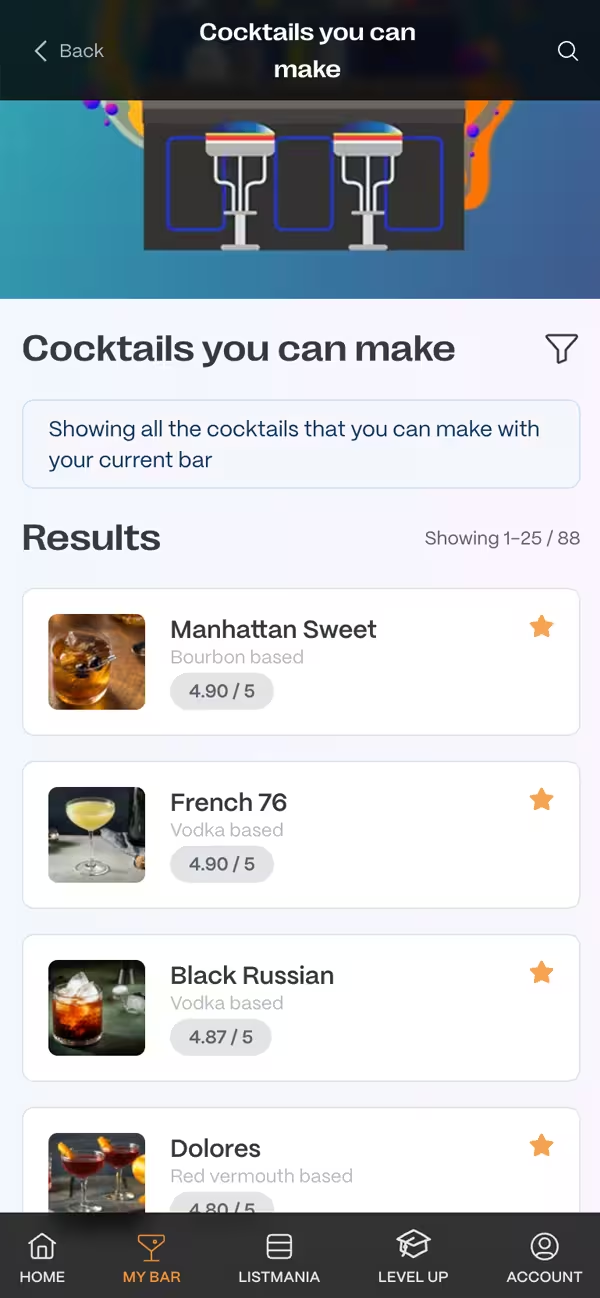Non-alcoholic beverages have absolutely exploded in popularity lately. Folks all around are on the h...
Books Have the Lowdown on Bottoms-Up
The classic cocktail is back, and it has tales to tell.
Often, those tales include the storytellers themselves. Alcoholic concoctions are legendary in the literary life: "You're a rummy, but no more than most good writers are," Ernest Hemingway is said to have told F. Scott Fitzgerald.
Readers who want to imbibe the heady lore, or learn to mix the drinks favoured by their favourites, will find plenty of inspiration in books about the art of the cocktail, whether they want to inhale a hot, steaming punch like Dickens, party like a 1930s flapper, or sip a gimlet, like detective Philip Marlowe in Raymond Chandler's 1953 "The Long Goodbye."
Marlowe's gimlet, along with William Faulkner's mint julep, Carson McCullers' hot-tea concoction that was a precursor to the Long Island Ice Tea, and Fitzgerald's Jazz-Age gin rickey, provide a few of the tales in "Hemingway & Bailey's Bartending Guide" by Mark Bailey. Illustrator Edward Hemingway is Ernest's grandson.
To get back directly to the source of Hemingway's favorite, the daiquiri, readers can savor a reprint of the 1935 "Bar La Florida Cocktails." Bar La Florida in Cuba, also called the Floridita, was where Papa drank the "Papa Doble" with friends including Spencer Tracy and Gary Cooper, Tennessee Williams, Ava Gardner and the Duke of Windsor. The Papa Hemingway Special was a daiquiri made with grapefruit juice.
Another retro reprint, Henry Craddock's "The Savoy Cocktail Book," was published in 1930. Craddock, the famous barman at the storied London hotel's American Bar, left America because of prohibition, and is said to have invented the dry martini.
The recipes range from the topical (The Charlie Lindbergh Cocktail, the Coronation Cocktail, the nonalcoholic Clayton's Temperance Cocktail) to the classics such as the Manhattan and the Sazarac, to the unusual, such as the Corn Popper.
For a true taste of Art Deco splendor, try Craddock's invention the White Lady, with lemon juice, Cointreau and dry gin.
While some might date the popularity of the cocktail to the Jazz Age, it goes back quite a bit further. A New York newspaper had a discussion of "What is a cocktail?" in 1806. The first recipe guide might have been 1862's "How to Mix Drinks; or, The Bon Vivant's Companion," which included that favorite of Dickens' stories, the punch bowl.
In "Punch: The Delights (and Dangers) of the Flowing Bowl," liquor historian David Wondrich celebrates the drink drunk by sailors in the 1600s, enjoyed as an old-fashioned tradition by Victorians like Dickens, and, according to Wondrich, making a comeback today as a cocktail alternative. Cheers.
Pardon the interruption
Did you know that you can become a member for free, taking your cocktail making skills up to level 11. You can save your My Bar ingredients, make tasting notes, have personalised Tried and Want to try lists and more.
Filed with tags
More to explore
When it comes to cocktails, few are as iconic—or as simple—as the Screwdriver. With just two ingredi...
Are you tired of serving mediocre cocktails at your home gatherings? Want to take your mixology skil...
Tag cloud
Explore more with our randomised tag cloud.
-
Godfather
-
Unusual Cocktails
-
Douglas Adams
-
Pisco
-
British Slang
-
Aguardiente
-
Concert
-
Mystery
-
Latin American
-
Classic Cocktail Literature
-
Tennis
-
Buttery
-
Cocktail Tools
-
European Heritage
-
Disaronno
-
Eye-catching
-
Hotel Inspired
-
Pop Culture
-
Mild Experience
-
Sipping
Bartender's top tip
Related posts
Can You Find All The Cocktails In This Picture?
How well do you know your cocktails? A little? A lot? Are you a bartender who has an encyclopaedic knowledge of all the classic and new age wonders? Well it's time to put that knowledge to the test no... read more
Deep Dive Into the Moscow Mule Cocktail
The Moscow Mule is more than just a cocktail; it's a cultural icon, served in a signature copper mug and cherished for its refreshing taste. This article will explore its origins, ingredients, present... read more
Ginger Ale vs. Ginger Beer: The Main Differences
Ginger beverages have been around for centuries, and while they share a common ingredient—ginger—they are distinct in flavor, production, and use. Whether you’re mixing up a cocktail or simply seeking... read more
Subscribe to our Newsletter
Get tips straight into your inbox.
Upgrade your mixology
Become a member for free taking your cocktail making skills up to level 11. Or become a premium member to rise to cocktail greatness.
- Save your bar forever
- Access to our Cocktail Creator, allowing you to create your own wonderful concoctions.
- Create personalised cocktail menus for all your events, bars or parties
- Save cocktails to personalised 'Tried' and 'Want to try' lists
- Create and record tasting notes on cocktails
- Create lists of cocktails to share with friends and family
- A personalised MyBar URL, allowing you to share everything you can make with friends
- And much more ... (what to buy next, measurement choices, search personalisation...)
Have you tried our Wordpress Plugin?
Download our plugin and embed cocktail recipes directly onto your own site or blog.
Choose from our whole recipe database, or choose a specific cocktail made with a certain ingredient, and let us place a beautiful recipe on your own site.
Find out more



